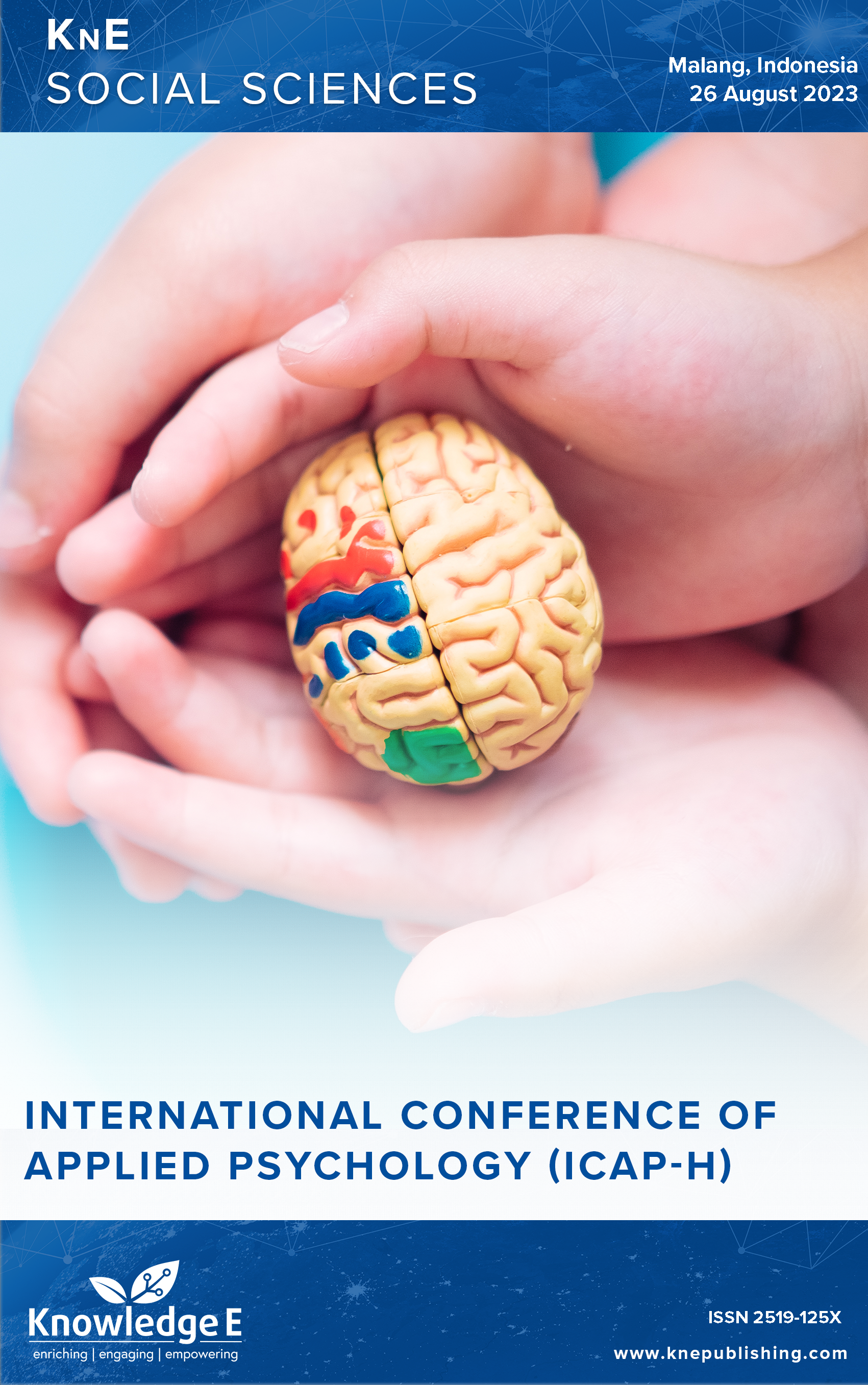Peer Counseling: Addressing Bullying Issues Among Adolescents
DOI:
https://doi.org/10.18502/kss.v9i5.15200Abstract
The problem of bullying is a severe issue among adolescents with far-reaching impacts on mental and social well-being. The increasing number of cases is often caused by poor handling and neglect, so victims do not get the psychological assistance they need. Peers have an essential role in adolescent development and can take a role in efforts to deal with bullying at school by becoming counselors for peers who need it. This study aims to improve the understanding and skills of peer counseling on student council cadres as agents of change in schools. This training combines psychoeducational methods to increase understanding of bullying and its implications, as well as providing peer counseling training to provide counseling skills to help peer victims of bullying. The subjects in this study were adolescents aged 13–15 years who were members of the intra-school organization (OSIS) and were taken using a purposive sampling technique totaling 31 subjects. This research is experimental research with a one-group pretest and posttest design. The results showed an increased understanding of bullying and skills in peer counseling. Based on the Wilcoxon test, it was found that the Asymp. Sig (2-tailed) value was 0.000 (sig. <0.05), so it was concluded that peer counseling training interventions were effective in increasing the understanding and skills of bullying and peer counseling.
Keywords: adolescent, bullying, peer counseling training, psychoeducation, school
References
Santrock JW. Life-span development. 13th ed. Jakarta: Erlangga Publisher; 2011.
Barzilay S, Brunstein Klomek A, Apter A, Carli V, Wasserman C, Hadlaczky G, et al. Bullying victimization and suicide ideation and behavior among adolescents in Europe: A 10-country study. Journal of Adolescent Health. 2017;61(2):179–186. http://dx.doi.org/10.1016/j.jadohealth.2017.02.002 DOI: https://doi.org/10.1016/j.jadohealth.2017.02.002
Moon B, Alarid LF. School bullying, low self-control, and opportunity. Journal of Interpersonal Violence. 2015;30(5):839–856. DOI: https://doi.org/10.1177/0886260514536281
OECD. Education in Indonesia learns from the results of PISA 2018. Center for Assessment of Educators Balitbang KEMENDIKBUD [Internet]. 2019;(021):1–206. Available from: http://repositori.kemdikbud.go.id/id/eprint/16742
Wiryantara J, Salsabila N, Afif Alhad M. The role of peer counseling on mental health. Bisma J Counts. 2020;4(3):242–253. http://dx.doi.org/10.23887/bisma.v4i1 DOI: https://doi.org/10.23887/bisma.v4i3.29867
Camodeca M, Nava E. The long-term effects of bullying, victimization, and bystander behavior on emotion regulation and its physiological correlates. Journal of Interpersonal Violence. 2022;37(3–4):NP2056–75. DOI: https://doi.org/10.1177/0886260520934438
Zhong M, Huang X, Huebner ES, Tian L. Association between bullying victimization and depressive symptoms in children: The mediating role of self-esteem. Journal of Affective Disorders. 2021;294( July):322–328. https://doi.org/10.1016/j.jad.2021.07.016 DOI: https://doi.org/10.1016/j.jad.2021.07.016
Tsaousis I. The relationship of self-esteem to bullying perpetration and peer victimization among schoolchildren and adolescents: A meta-analytic review. Aggressive Violent Behavior. 2016;31:186–199. http://dx.doi.org/10.1016/j.avb.2016.09.005 DOI: https://doi.org/10.1016/j.avb.2016.09.005
Holt MK, Vivolo-Kantor AM, Polanin JR, Holland KM, DeGue S, Matjasko JL, et al. Bullying and suicidal ideation and behaviors: A meta-analysis. Pediatrics. 2015;135(2):e496–509. DOI: https://doi.org/10.1542/peds.2014-1864
Bronfenbrenner U. The ecology of human development. Harvard University Press; 2009.
Hornby G. Bullying: An ecological approach to intervention in schools. Prev Sch File. 2016;60(3):222–230. DOI: https://doi.org/10.1080/1045988X.2015.1086969
Rigby K. Bullying interventions in schools: Six basic approaches. Chichester, England: Wiley/Blackwell; 2012. DOI: https://doi.org/10.1002/9781118362648
Nozawa H, Ikegami K, Michii S, Sugano R, Ando H, Kitamura H, et al. Peer counseling for mental health in young people – Randomized clinical trial. Mental Health & Prevention. 2019;14(May):200164. https://doi.org/10.1016/j.mph.2019.200164 DOI: https://doi.org/10.1016/j.mph.2019.200164
Rahmawati AH, Suwarjo, Utomo HB. The effect of basic skills counseling as vital skills in peer counseling to Indonesian students. Universal Journal of Educational Research. 2019;7(9):1874–1881. DOI: https://doi.org/10.13189/ujer.2019.070905
Olweus D. Aggression in the schools: Bullies and whipping boys. New York: Hemisphere Publishing; 1978.
Menesini E, Salmivalli C. Bullying in schools: The state of knowledge and effective interventions. Psychology, Health & Medicine. 2017;22:240–253. http://dx.doi.org/10.1080/13548506.2017.1279740 DOI: https://doi.org/10.1080/13548506.2017.1279740
PK S. Understanding school bullying: Its nature and prevention strategies. London: SAGE; 2014.
Latipun. Experimental psychology. 3???? ed. Malang: UMM Press; 2015.
Corder GW, Foreman DI. Non-parametric statistics for non-statisticians. Canada: John Wiley & Sons, Inc; 2009. DOI: https://doi.org/10.1002/9781118165881
Gray SL, Culpepper CL, Welsh DP. Adolescence. Encyclical Hum Behav Second Ed. 2012;22–29. DOI: https://doi.org/10.1016/B978-0-12-375000-6.00003-3
Astuti KM, Djuwita R. Bullying and school well-being: Place attachment as moderator. Journal of Applied Psychology. 2019;07(02):158–170. DOI: https://doi.org/10.22219/jipt.v7i2.5942
Salsabila S, Wiryantara J, Alhad A. Bisma The Journal of Counseling. 2020;( January). Available from: http://dx.doi.org/10.23887/bisma.v4i1 DOI: https://doi.org/10.23887/bisma.v4i1
Midgett A, Doumas D, Sears D, Lundquist A, Hausheer R. A bystander bullying psychoeducation program with middle school students: A preliminary report. Prof Couns. 2015;5(4):486–500. DOI: https://doi.org/10.15241/am.5.4.486
Pratiwi D. Psychoeducation to increase understanding of the problem of insomnia in the elderly. Procedia Case Studies and Psychological Intervention. 2017;5(1):8–11.
Nawangsari SA. Parenting psychoeducation to increase knowledge of parents with disabilities. Procedia Case Studies and Psychological Interventions. 2022;10(3):88–92. Available from: http://dx.doi.org/10.22219/procedia.v10i3.19217% 0Ahttps://ejournal.umm.ac.id/index.php/procedia/article/download/19217/11327 DOI: https://doi.org/10.22219/procedia.v10i3.19217
Houlston C, Smith PK. The impact of a peer counseling scheme to address bullying in an all-girl London secondary school: A short-term longitudinal study. Brother J Educ Psychol. 2009;79(1):69–86. DOI: https://doi.org/10.1348/000709908X293878
Lee S, Kim CJ, Kim DH. A meta-analysis of the effect of school-based anti-bullying programs. Journal of Child Health Care. 2015;19(2):136–153. DOI: https://doi.org/10.1177/1367493513503581
Midgett A, Doumas DM. Training elementary school students to intervene as peeradvocates to stop bullying at school: A pilot study. Journal of Creativity in Mental Health. 2016;11(3–4):353–65. http://dx.doi.org/10.1080/15401383.2016.1164645 DOI: https://doi.org/10.1080/15401383.2016.1164645

